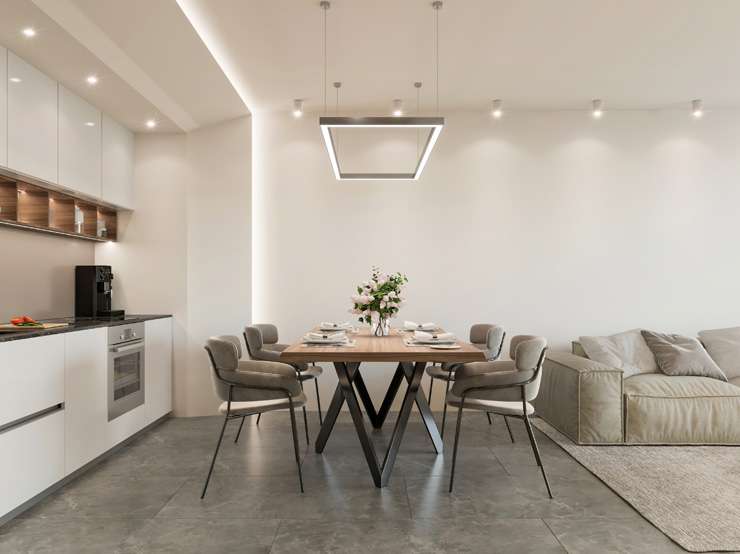Starting at the front door, flooring establishes the tone and style of your home. It affects how fresh your home looks and helps bring all the rooms together into a cohesive whole look.
But picking flooring for a renovation, quick refresh or new build can be daunting. Where do you start?
I always suggest to clients to think about separating your home into hard and soft zones. A bedroom would be considered a soft zone, while a kitchen or bathroom would be a hard zone.
But the tricky bit is deciding about the spaces in between. Do you want your lounge to be a soft zone? Do you merge hallways into the hard zone category, as a high traffic area that gets a lot of wear and tear?
Start your property search
If a lounge or living room is open plan to the kitchen and dining area then it makes sense to include it with those hard zones. Using the same material helps to create the appearance of an expansive space with unlimited flow, whereas breaking the line to just carpet the lounge space can make the area look smaller. If you want to cosy it up, you can always soften that part of the room with a large feature rug and layered textiles to make it into the perfect Netflix spot.

Choosing the right material for your floor is crucial. Photo / Supplied
Once you have decided which rooms are which zones, then you can decide what combination of materials you want. When we are putting together the palette of materials and colours for clients we first listen carefully to what functions they need - things like whether they have pets or children, whether anyone is asthma-prone, and if parts of the house have extensive exposure to the sun.
Once we know this, we can suggest appropriate flooring materials. The top four flooring products we like are engineered timber, laminate flooring, polished concrete and carpet, but there are dozens more. And all four of these products have an enormous variation in styles, tones and functional performances, so there is plenty of choice.

A polished concrete floor can add style to a modern space. Photo / Supplied
Figuring out the pros and cons of each product is a process of elimination, especially if function and performance is driving the decision criteria. There are trade offs: you might choose a laminated product over engineered timber because of budget constraints, yet prefer the feel underfoot of real timber versus the laminate. With carpets, wool is luxurious underfoot (and personally my favourite), but if you have high sun exposure, then a nylon cut pile would be more suitable.
Choosing flooring colours is the last part of the decision-making.
Everyone has their own preference, so while I can’t really tell you which colours to choose, I can tell you to think of three colour families - cool-based, warm-based and ‘greige’ (grey-based beige). Right now, I am really loving caramel-toned woods and moving slightly away from the blonde-toned wood. Caramel tones warm up grey-based colour schemes and give a luxurious ambiance to the whole home. You can also pair caramel wood with both cool and warm based carpets depending on what you love.
Think about how the materials work with each other. For example, when choosing flooring for the hall or rest of the house, make sure it works with your bathroom tile as the two materials are going to edge up to each other.
Finally, make sure your flooring palette is consistent with the rest of your decor. Start with your bathroom tiles, then lay out samples of the materials that transition from hard and soft zones, and tweak your paint scheme so that everything seamlessly works together.
If you aren’t confident with understanding the pros and cons of a product that you are interested in, the sales people at your local flooring retailer are experts who really know their stuff, or seek advice from an interior designer.
- Laura Heynike is director of Pocketspace Interiors











































































